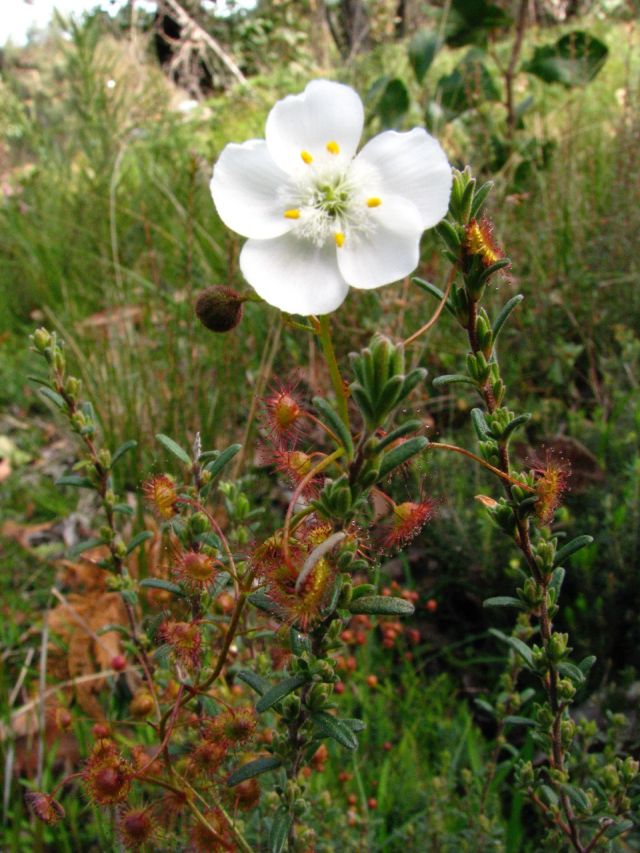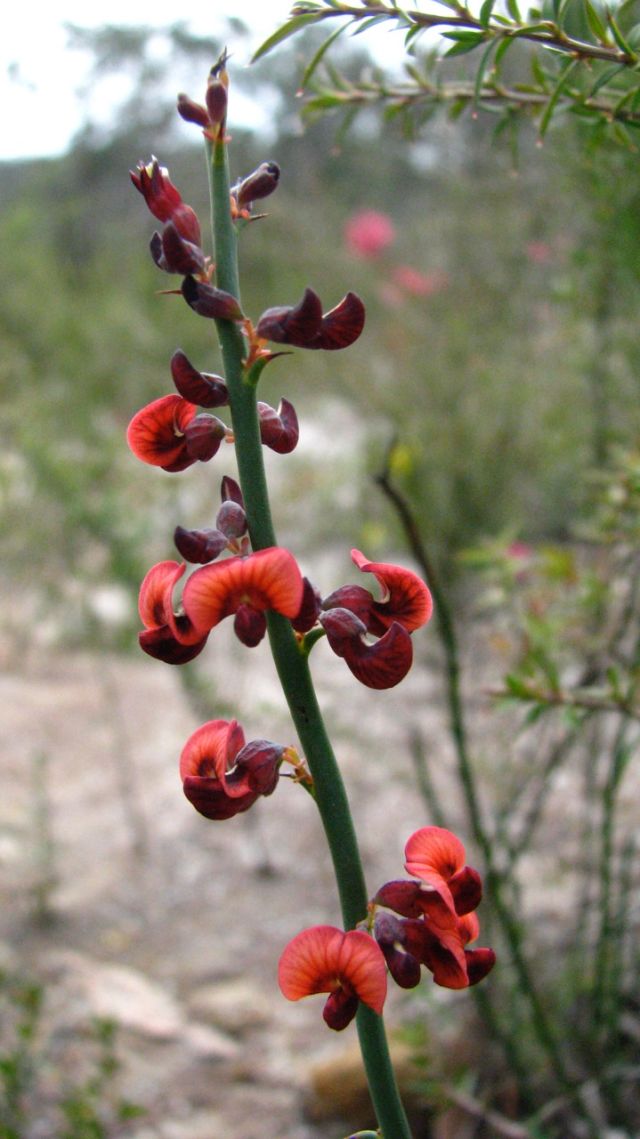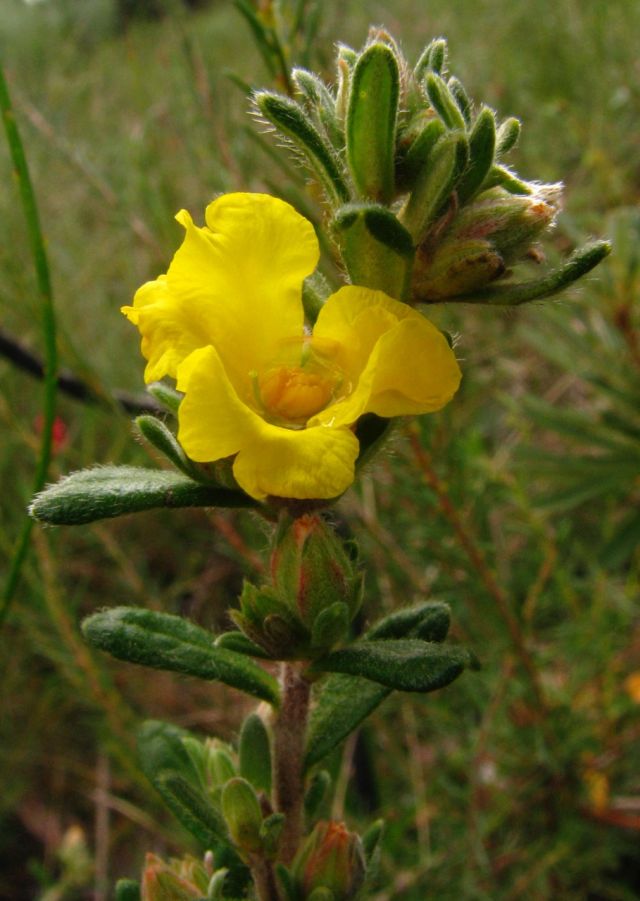Following good rain, August is always an exciting month as our bush and heathlands burst with new life and colour.
Some of the most interesting plants in our district are the carnivorous Sundews, Droseras. We have seven species, and the three most common, two with updated botanical names, flower this month. Tall Sundew, D. auriculata, and Climbing Sundew, D. macrantha subsp. macrantha, have small white-to-pink flowers.

Climbing Sundew

Climbing Sundew
The Scented Sundew, D. aberrans, is very different, with a single, ground-hugging large white flower that is commonly found after fires. However it is the leaves that are of most interest. Using a magnifier, I was fascinated to see the number and variety of small creatures trapped in the disc-shaped leaves by the tiny sticky tentacles or hairs. Have a look, you will be amazed!

Scented Sundew
Be on the watch for flowers on the stunning Leafless Bitter-pea, Daviesia brevifolia. This unappealing, leafless, spiky (though sculptural) bush suddenly springs into flower at the end of winter with beautiful pea-flowers of an unusual vivid apricot to salmon pink colour.

Leafless Bitter-pea
In my garden, and in woodlands, I am looking forward to seeing Austral Indigo, Indigofera australis, covered in racemes of eye-catching mauve pink pea-flowers. The flowers of the less showy Common Hovea, Hovea heterophylla, are of similar, though darker mauve colour. The flowers grow in small clusters in the leaf axils of the bush as it straggles through other vegetation.

Common Hovea
In the plant study group this month we looked at the much-maligned mistletoe. The most common of the two species found in our district is the Drooping Mistletoe, Amyema pendula subsp. pendula. At a distance, the leaves look similar to the host plant, but are a slightly different colour and texture. The flowers hang in lovely pendulous red and green clusters.

Drooping Mistletoe
A close look will reveal that they are usually in groups of three with the central flower being stalkless. A magnifier will show how the petals, which are fused to the stamens, suddenly separate and flare out.
Mistletoe is a fascinating plant and a relic from Gondwana. It is semi-parasitic, producing its own energy by photosynthesis, but gaining mineral nutrients and water from its host plant. It is often considered to be very destructive to our native plants but it is not prolific in healthy forest. In fact mistletoe plays a key role in the ecology of Australian woodland. When it was removed from experimental sites a third of the bird species disappeared. As bird watchers know, mistletoe, with its good food and shelter, is a great place to find a range of birds including, of course, the Mistletoebird. Other research showed that the large amount of fertilising litter dropped by mistletoe affects insect numbers and, in turn, the birds that feed on them.
Wattles should be a real highlight this month. Look for how many species you can identify, such as Golden Wattle, A. pycnantha, Myrtle Wattle, A. myrtifolia, Blackwood, A. melanoxylon, and Silver Wattle, A.dealbata.
On a July walk I saw Silky Guinea-flower Hibbertia, sericea var. sericea, starting to flower along Ted’s Track. This low-growing shrub has lovely deep yellow, five-petalled fragile flowers.

Silky Guinea-flower
Flowers of Anglesea and Aireys Inlet will be essential this month to identify, and enjoy, the many flowers that will be emerging.
Ellinor Campbell